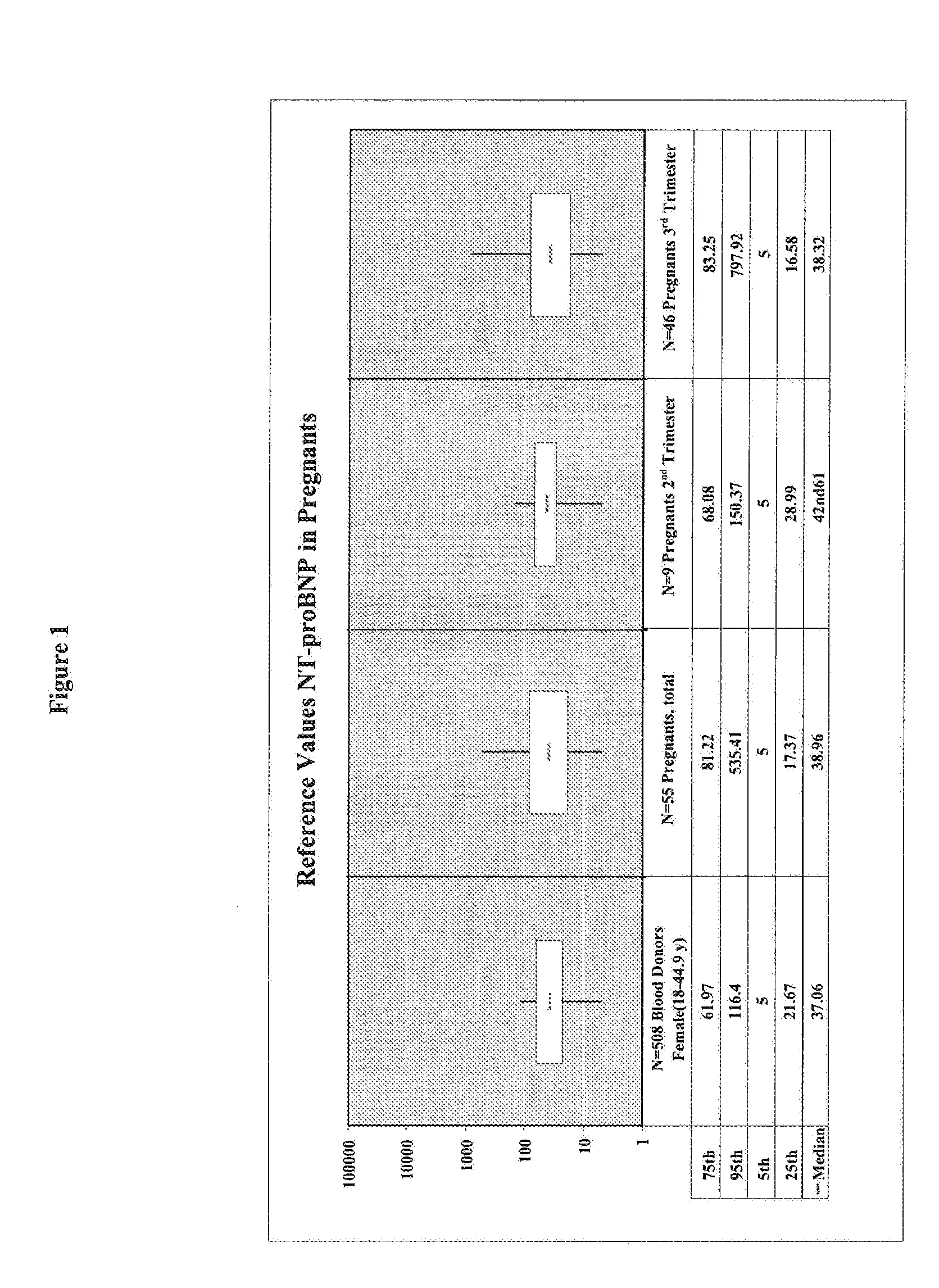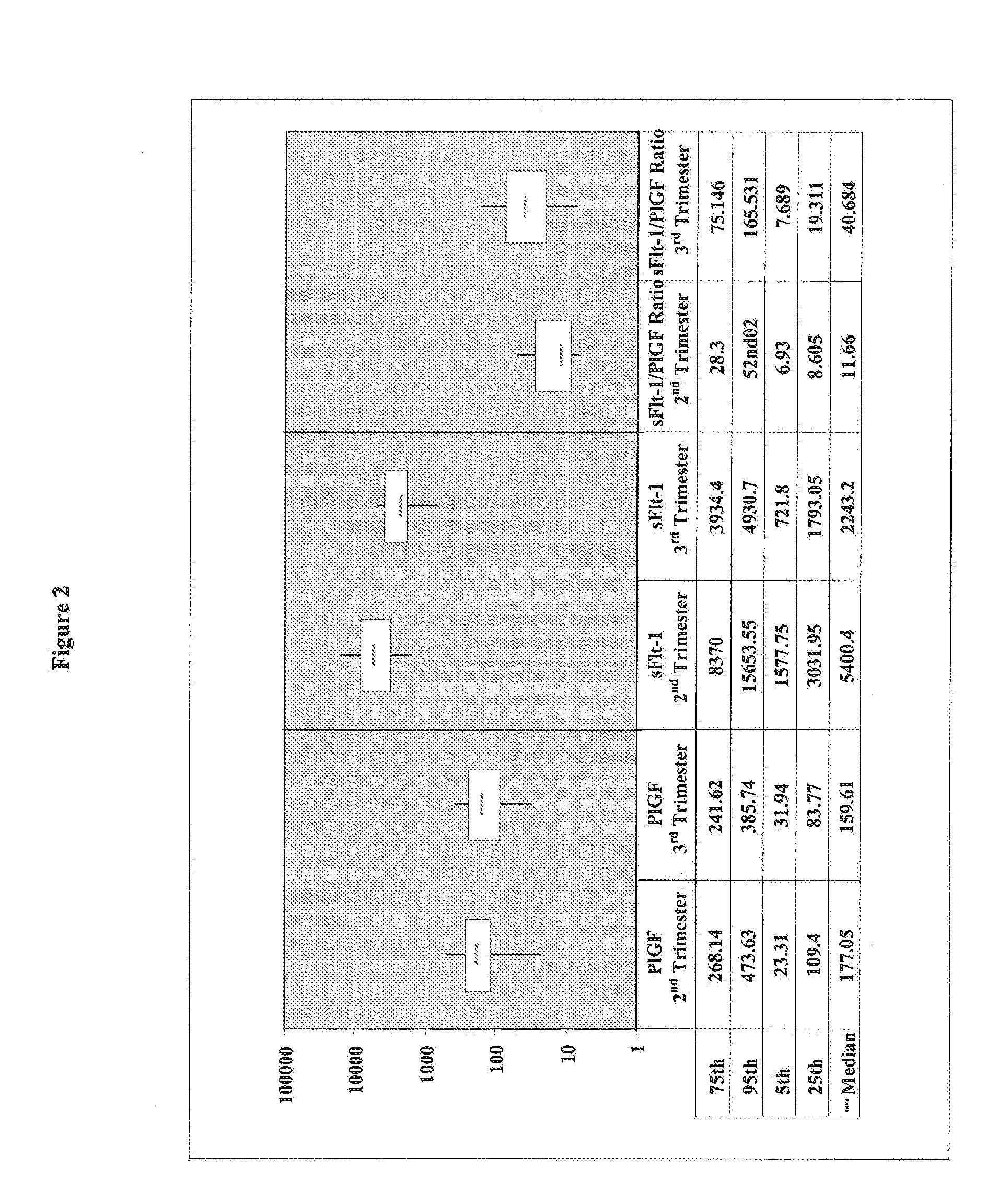Discriminaton of cardiac dysfunction in pregnant females
- Summary
- Abstract
- Description
- Claims
- Application Information
AI Technical Summary
Benefits of technology
Problems solved by technology
Method used
Image
Examples
examples
[0141]A cohort of 55 pregnant women has been clinically investigated for the presence of a placenta-associated cardiac dysfunction or the presence of a cardiac dysfunction related to heart disease. Reference values for sFlt-1, PlGF, and NT-proBNP in pregnant women (N=55) classified in 2nd trimester (N=9) and 3rd trimester (N=46) were determined. The values for sFlt-1 and PlGF in pregnant women with elevated NT-proBNP values (>125 pg / ml) are shown in Table 1.
[0142]Blood samples of the pregnant women have been analyzed by the ELECSYS NT-proBNP assay (Roche Diagnostics GmbH) for NT-proBNP concentrations. The concentrations of sFlt-1 have been analyzed by using the human soluble VEGF R1 / Flt-1 immunoassay QUANTIKINE (Catalog Number DVR 100B) from R&D Systems. The quantitative determination of human placenta growth factor (PlGF) concentrations was analyzed by using the human PlGF Immunoassay QUANTIKINE (Catalog Number DPG00) from R&D Systems.
TABLE 1sFlt-1 and PlGF values in pregnant women...
PUM
 Login to View More
Login to View More Abstract
Description
Claims
Application Information
 Login to View More
Login to View More - R&D
- Intellectual Property
- Life Sciences
- Materials
- Tech Scout
- Unparalleled Data Quality
- Higher Quality Content
- 60% Fewer Hallucinations
Browse by: Latest US Patents, China's latest patents, Technical Efficacy Thesaurus, Application Domain, Technology Topic, Popular Technical Reports.
© 2025 PatSnap. All rights reserved.Legal|Privacy policy|Modern Slavery Act Transparency Statement|Sitemap|About US| Contact US: help@patsnap.com


